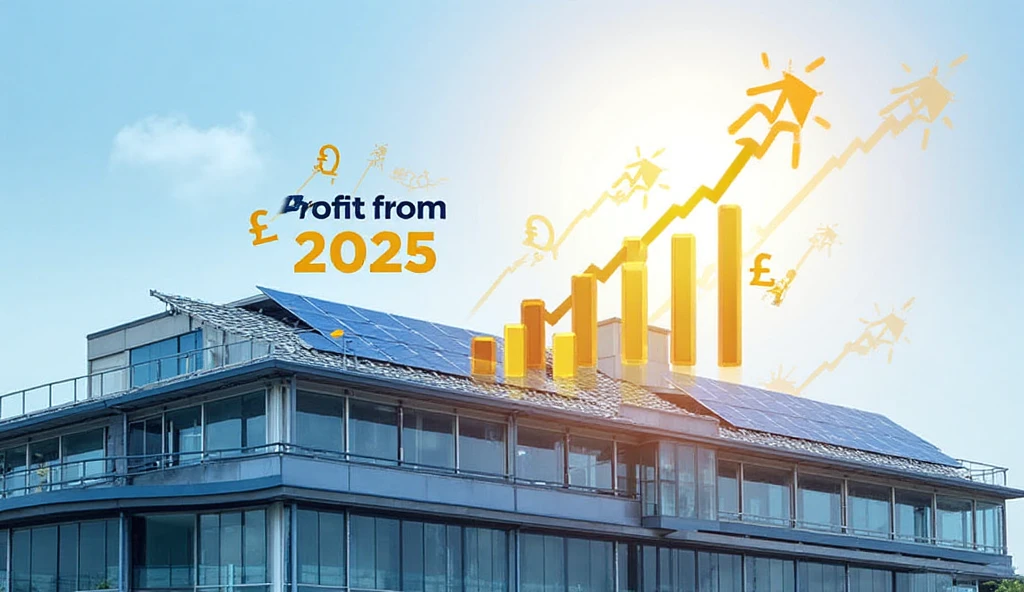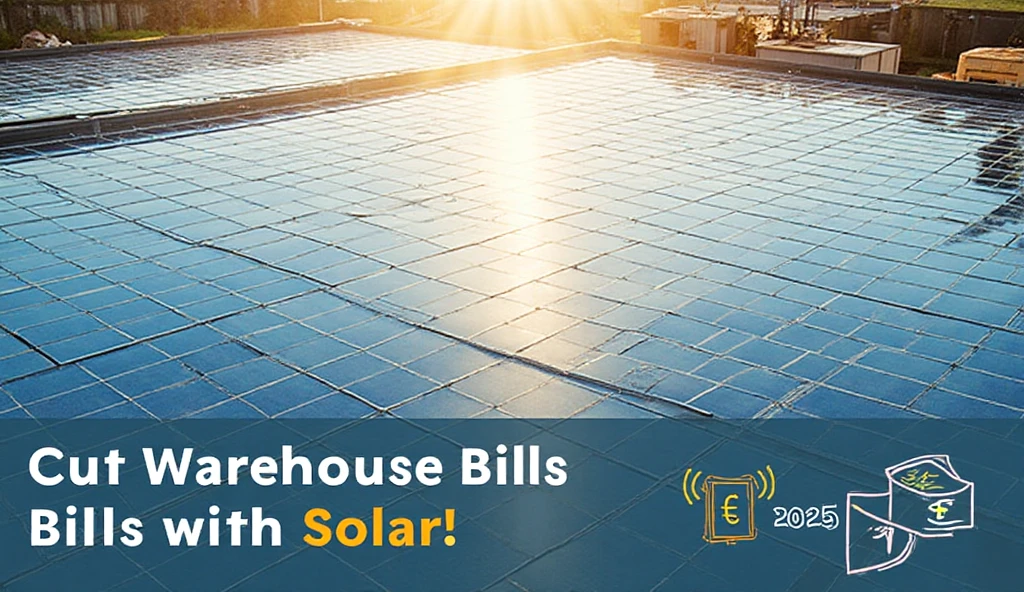Rising energy costs and growing sustainability demands are driving commercial property owners across the UK to invest in solar energy. But one key question remains for decision-makers: what’s the return on investment (ROI) for installing solar panels on a commercial building in 2025? The answer depends on several factors, but for many, the numbers now add up faster than ever before. With financial incentives, tax breaks, and reliable long-term savings, solar ROI is at its strongest point in years.

What Determines Solar ROI for Commercial Properties?
Solar ROI refers to how quickly the cost of a solar installation is recovered through savings on energy bills, income from exported electricity, and tax relief. In 2025, several key factors influence ROI on UK commercial buildings. These include the size of the solar system, your current electricity tariff, daily consumption patterns, percentage of self-consumed energy, building location and orientation, and available tax reliefs and export payments. Properties with high daytime energy usage benefit the most, especially if electricity consumption aligns with peak solar production
Typical Payback Periods and Annual Savings
Most commercial buildings in the UK can expect a solar ROI payback period of between 4 and 7 years. After that point, the system typically continues to deliver free electricity and SEG income for another 15 to 20 years. For example, a 50kW system costing around £45,000 may save £6,000 to £9,000 annually on electricity. If paired with battery storage and strong self-consumption, that figure can rise to over £10,000. For larger systems — 100kW to 250kW or more — typical annual savings range from £12,000 to £35,000, depending on usage and export rates
Zero VAT and Full Capital Allowances in 2025
One of the biggest changes boosting ROI in 2025 is the removal of VAT on commercial solar installations. This reduces upfront costs by 20% immediately. In addition, businesses can benefit from full capital expensing — 100% of the cost of installation can be written off against taxable profits in the first year. This significantly reduces the real cost of going solar and shortens the payback timeline. A commercial landlord or tenant can reduce Corporation Tax liabilities while also lowering operational costs through solar adoption
Smart Export Guarantee (SEG) Adds to ROI
Through the Smart Export Guarantee, UK businesses are paid for every unit of unused solar electricity they export back to the grid. Export rates in 2025 range from 4p to 15p per kWh depending on the energy supplier. A commercial building with limited weekend operations may export a significant portion of solar energy during downtime, generating additional revenue. While SEG alone won’t drive ROI, it adds a steady secondary income stream and improves long-term financial returns
Increased Property Value and Letting Potential
Installing solar panels can increase the capital value and rental appeal of a commercial property. Tenants increasingly prefer energy-efficient spaces with lower running costs. For landlords, solar improves the Energy Performance Certificate (EPC) rating, which is now essential for legal compliance in letting. A higher EPC can attract longer-term tenants, justify premium rents, and reduce vacancy periods — all contributing to stronger overall ROI
Protection Against Rising Energy Costs
One of the most valuable aspects of solar ROI is energy cost protection. Electricity prices in the UK remain unstable, and commercial users often face higher per-unit charges than residential customers. By generating power on-site, businesses reduce their exposure to future price spikes. Locking in 20+ years of reduced or free energy provides a predictable operating environment that improves financial planning and budgeting
ROI with Battery Storage
Pairing solar with battery storage increases self-consumption, which is one of the strongest ROI drivers. A battery allows businesses to store excess solar power for use in the evening, during demand surges, or as a backup during grid failures. While batteries add to initial costs, they can raise the self-consumption rate to 80% or more, making the system far more efficient. This higher usage of free electricity significantly shortens the payback period and maximises overall ROI
Lease vs Purchase: How Ownership Affects Returns
Commercial building owners have the option to purchase solar systems outright or use finance models like Power Purchase Agreements (PPAs) or leasing. Purchasing the system delivers the highest long-term ROI, but requires upfront capital. PPAs and leases reduce or eliminate the initial cost and deliver immediate bill savings. However, ROI is lower as some of the savings are shared with the system owner or financier. For owner-occupiers, direct ownership is generally the most profitable route, while landlords may benefit from passing costs to tenants in exchange for reduced service charges
ROI Case Study: Office Building in Greater Manchester
A four-storey office building in Greater Manchester installed a 75kW solar PV system at a cost of £55,000. The site consumed an average of 95,000 kWh per year, mostly during working hours. Post-installation, they reduced grid energy use by 65%, saving over £11,000 annually. With SEG income of £750 and £10,000 in Corporation Tax savings from capital allowances, the payback period is projected at just 4.5 years. The system will provide over £180,000 in lifetime savings over 25 years
Minimal Maintenance, Maximum Lifespan
Solar panels require very little maintenance and come with performance warranties of 25 years or more. Inverters may require replacement around the 10- to 15-year mark, but system monitoring can identify issues before they affect performance. Most systems operate at over 80% efficiency even after two decades. This long lifespan ensures returns well beyond the initial payback window
ESG Compliance and Green Credentials
Installing solar enhances a building’s sustainability profile and contributes to environmental goals. With more businesses reporting on ESG (Environmental, Social, Governance) performance, solar installations support Scope 2 emissions reductions and compliance with net-zero targets. For businesses in supply chains with sustainability requirements, solar can improve competitiveness and open new opportunities
Final Thoughts
In 2025, solar panels offer a highly attractive return on investment for UK commercial buildings. Whether you’re a landlord, owner-occupier, or developer, the combination of reduced energy bills, tax relief, SEG income, and increased property value delivers clear financial benefits. With short payback periods and long-term performance, solar is one of the most effective upgrades available for commercial property owners today
To get an accurate ROI forecast for your building, speak to an MCS-certified commercial solar installer. They can assess your site, recommend system sizing, and guide you through planning, financing, and installation. With rising grid prices and zero-VAT incentives in place now, acting sooner delivers stronger returns



Leave a Comment